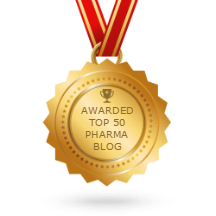by Gabriel Levitt, Vice President, PharmacyChecker.com and Margaret Rode, PharmacyChecker.com | Apr 22, 2011 | Drug Prices
We’ve recently reported on actions by foreign governments that lowered drug prices in other countries during the recession – a period in which U.S. drug prices increased. Despite much lower drug costs in other wealthy countries, there are voices of discontent regarding drug prices within these countries as well. This week we decided to take a look at drug prices in the United Kingdom.
This month in England, National Health System (NHS) prescription prices will raise 20 pence (approximately $0.33). This is occurring the same week that Scotland announced it will no longer charge for any NHS prescriptions – a move already in effect in Wales and Northern Ireland. About the increases, patient advocate experts are echoing the same concerns we often write about here. Katherine Murphy, Chief Executive of the Patients Association says:
At a time when many patients are struggling to make ends meet, another increase on charges they must pay is not acceptable. Some patients put off going to their doctor because they do not want to have to pay for their prescriptions. It is essential all patients feel they can access healthcare when they need it and not be deterred by costs.
When looking at the numbers it’s hard to see how such tiny increases on already low drug prices cause great concern. In stark contrast to drug prices in America today, the current cost per prescription in the United Kingdom is £7.40 – or $12. This price is for any written prescription, regardless of quantity, or if it is brand name or generic. And, medication administered in the hospital, at walk-in clinics, or by a general practitioner, plus prescribed contraceptives, are almost always free of charge.
Health organizations in the UK, such as the Patients Association and British Medical Association, view a 2.7% increase, on meds that already cost so little, as a public health issue. Compare that number with brand name drug price increases, reported by AARP, of 8.3% in the U.S. last year – on products that can cost hundreds or even many thousands of dollars a year – and we’re led to wonder, why is the whole American medical establishment not up in arms here?
Tagged with: brand name drugs, British Medical Association, Drug Prices, England, National Health System, NHS, Northern Ireland, Patients Association, public health, recession, Scotland, United Kingdom, United States, Wales
by Gabriel Levitt, President, PharmacyChecker.com and Prescription Justice | Apr 15, 2011 | Drug Prices
Last month the U.S. Food and Drug Administration announced a no contest grant to be awarded to the National Consumers League (NCL) to examine the problem of prescription adherence. The problem is one we discuss almost every week on this blog: Americans are not taking their prescribed medication. Therefore, when we came across an FDA initiative aimed at tackling the problem we were intrigued.
In the FDA announcement we expected to find mention of some of the known causes for Americans not taking their prescribed medications, such as cost, which has previously been proven as the number one reason Americans skip prescriptions. Amazingly, there was not one mention of drug prices or cost in the announcement. In choosing NCL as the recipient of the $40,000 grant it appeared that FDA might be on the right track After all, NCL knows from its own commissioned study that drug prices are the main reason Americans don’t take their medications. NCL has brought together “stakeholders” from government, non-profit organizations and the private sector. This sounds like a good idea. (more…)
Tagged with: AARP, Canada, Drug Prices, FDA, National Consumer's League, National Medication Adherence Campaign, prescription adherence, prescriptions
by PharmacyChecker.com | Apr 1, 2011 | Drug Prices
This week in China, the National Development and Reform Commission put dramatic retail drug price cuts into effect. To lower prices, hospitals and clinics are now required to cap the costs for over 1,200 antibiotics and circulatory system drugs, according to Reuters. The 21% average decrease means $1.53 billion savings for Chinese patients – which is good news for them, but what does this mean for Americans?
While many of our drugs or drug ingredients are already manufactured in China, these price cuts won’t reduce the price of those drugs sold in the U.S. What could happen is the opposite. Lower prices in China may further drive increases in U.S. drug prices as drug companies look to the U.S. market to make up for lower margins in China. The U.S. is the only large market in which drug companies can arbitrarily increase their prices. (more…)
Tagged with: China, consumer guide, drug cuts, Drug Prices, healthcare, How to Save Money on Prescription Drugs, National Development and Reform Commission, price controls, retail, United States


